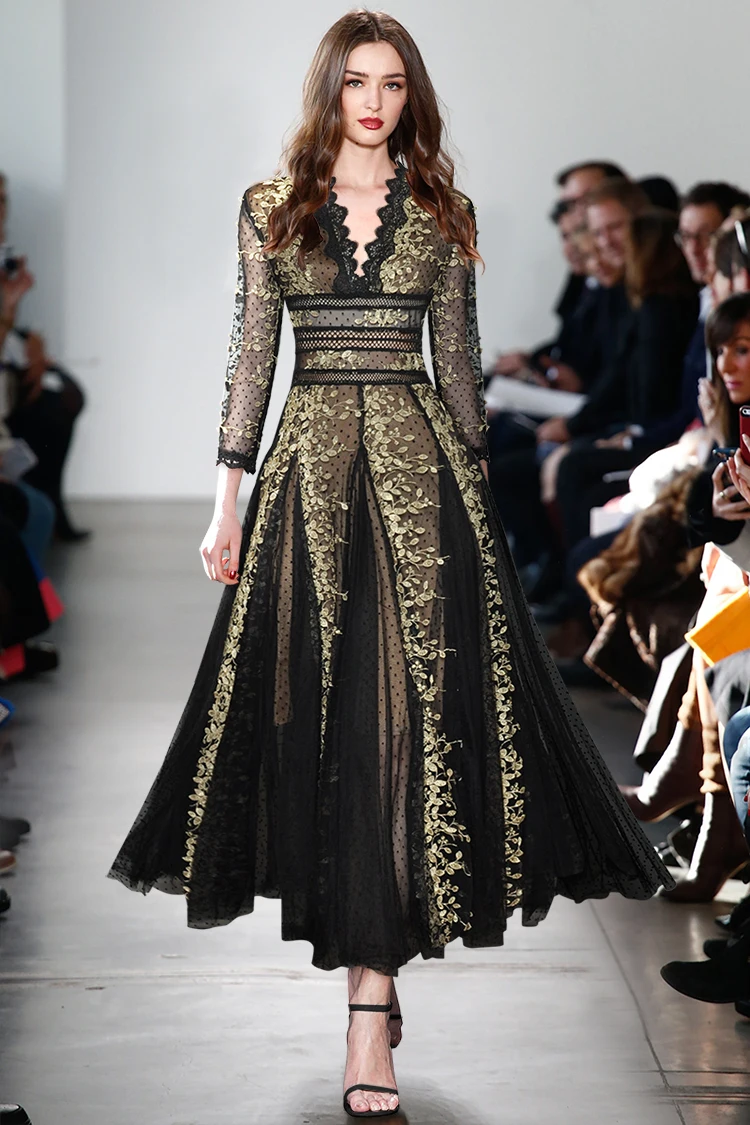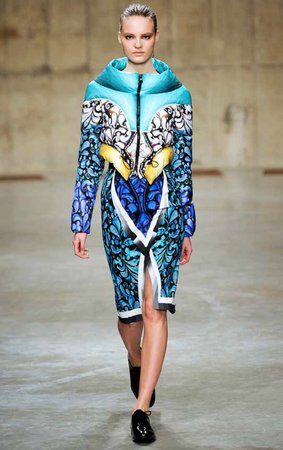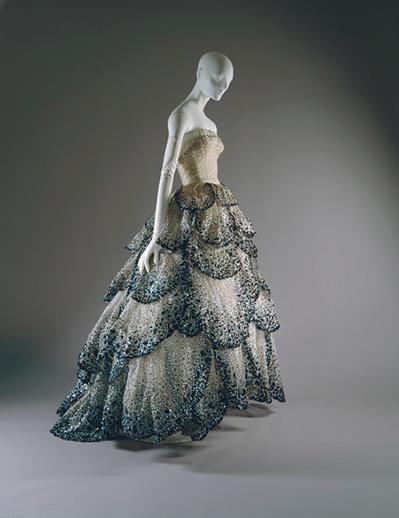The Ultimate Wardrobe Refresh Starts With Sedgars South Africa
The Influence of Sustainable Practices on Modern Style Styles
Sustainable methods have improved modern-day fashion, driving a shift in the direction of eco-friendly products and honest production. Developers currently favor natural cotton, recycled materials, and ingenious textiles. Upcycling has actually transformed waste right into special garments, while transparency in sourcing has actually ended up being necessary. This advancement shows a growing understanding among customers regarding their purchasing selections. As the industry adapts, brand-new patterns arise that challenge typical visual appeals. What might the future hold for style in this framework?
The Increase of Eco-Friendly Products
How have eco-friendly materials changed the garment industry? The development of green materials has actually considerably improved fashion, driving brands to reconsider their sourcing and production procedures. These sustainable options, consisting of organic cotton, hemp, and recycled polyester, use a decreased ecological impact compared to standard fabrics. Designers are now focusing on these products, identifying that consumers progressively prefer brand names devoted to sustainability.This change has resulted in ingenious methods, where fashion homes try out biodegradable fabrics and all-natural dyes, enhancing both visual charm and ecological obligation. Additionally, collaborations between developers and sustainability-focused business have increased the integration of environment-friendly products into mainstream collections.As an outcome, the garment industry is observing a progressive but profound adjustment, relocating towards an extra lasting future. This commitment not only shows advancing customer values however additionally demonstrates the possibility for fashion to lead in ecological stewardship.
Upcycling: Changing Waste Into Style
Upcycling has become a transformative force in the apparel industry, converting discarded materials into desirable garments and devices. This innovative strategy not only minimizes waste but also motivates creativity and creativity among designers. By repurposing items such as old clothes, material scraps, and also non-textile materials, upcycling creates one-of-a-kind pieces that narrate, reflecting individual style and ecological consciousness.Many independent designers and contemporary brands have actually welcomed upcycling as a core technique, appealing to consumers that value sustainability and individuality. The procedure commonly entails methods like decoration, patchwork, or reconfiguration, permitting unlimited possibilities in layout. Consequently, upcycled style reverberates with those seeking to make ecologically responsible options while still sharing personal aesthetics.In essence, upcycling not just mitigates the ecological impact of style waste but also fosters a new culture of development and admiration for workmanship within the industry.
Moral Production: Fair Labor and Openness
Honest production in vogue highlights the significance of fair wages for employees, making sure that workers receive just settlement for their efforts. Openness in supply chains is necessary, allowing customers to recognize the beginnings of their garments and the problems under which they are made. Additionally, honest sourcing techniques promote duty in picking materials, strengthening the dedication to sustainability and social justice.
Fair Wages for Workers
While the style sector progressively welcomes lasting practices, guaranteeing reasonable incomes for workers remains an important part of ethical production. Fair wages not only equip workers however likewise improve the general quality of life for individuals in the supply chain. Numerous brand names are currently embracing plans that focus on equitable compensation, acknowledging that a lasting future can not be improved exploitation. By dedicating to fair pay, business promote commitment and boost productivity amongst their employees (Designer Store Sedgars). Additionally, consumers are becoming extra knowledgeable about labor problems and are progressively demanding openness relating to workers' legal rights. As a result, brands that prioritize reasonable salaries are not just aligning with ethical requirements however are likewise positioning themselves competitively in a market that worths social duty
Transparency in Supply Chains
The dedication to fair incomes is intrinsically connected to the wider concern of transparency in supply chains within the apparel industry. Transparency warranties that customers are notified concerning the beginnings of their clothing and the problems under which they are created. Brand names that prioritize transparency typically release in-depth records detailing their supply chain processes, labor techniques, and sourcing of products. This openness fosters trust fund and commitment among consumers that increasingly demand honest methods. Furthermore, transparency aids to hold business liable for their labor methods, allowing scrutiny and encouraging improvements. By revealing the complexities of their supply chains, brand names can contribute to a much more fair fashion community, ultimately advertising not only honest production however likewise sustainable consumption amongst their customers.

Moral Sourcing Practices
As customers become much more aware of the effect of their purchasing choices, brand names are significantly embracing honest sourcing techniques that focus on fair labor and ecological sustainability. These techniques entail making certain that employees get reasonable salaries, risk-free working problems, and are treated with dignity. Several fashion business are moving away from unscrupulous labor practices and are instead working together with vendors that comply with moral criteria. Openness in sourcing more boosts customer trust, as brand names reveal their supply chain techniques, permitting customers to make educated choices. This shift in the direction of ethical sourcing not only adds to social duty yet also reverberates with an expanding demographic that values sustainability in style. As an outcome, moral sourcing is coming to internet be a specifying attribute of modern-day style brands.
The Duty of Technology in Sustainable Style
The fashion sector has actually long been connected with waste and pollution, technology is progressively changing it into a more lasting sector. Innovations such as 3D printing allow designers to create garments with much less product waste, while electronic textile printing allows for on-demand manufacturing, reducing excess supply. Furthermore, improvements in reusing technologies are helping with the repurposing of fabrics, decreasing garbage dump contributions.In enhancement, information analytics and artificial intelligence assistance brand names forecast fads more properly, guaranteeing they produce only what is required. Blockchain technology enhances openness in supply chains, allowing customers to map the beginnings of their clothing and confirm lasting methods. Wearable modern technology is developing, promoting durability and performance in fashion items. Through these technological improvements, the apparel industry is gradually adopting an extra circular economy version, promoting lasting techniques that could redefine its ecological influence.

Mindful Consumerism: Moving Buyer Mindsets
Conscious consumerism is reshaping the apparel industry as customers increasingly focus on moral style choices. This shift is driven by a need for transparency, engaging brand names to divulge their techniques and supply chains. Because of this, brand loyalty is evolving, with consumers a lot more most likely to support those that line up with their values.
Moral Style Options
Moving buyer frame of minds in the direction of moral style selections shows an expanding understanding of the influence of consumer habits on the environment and society. Consumers are significantly prioritizing brand names that stress moral manufacturing practices, sustainable products, and reasonable labor conditions. This change is fueled by a desire to support companies that align with personal values, advertising a much more accountable fashion business. As a result, brands are adapting their methods, integrating openness and sustainability into their core goals. Moral style selections not only test standard retail methods yet likewise urge customers to review the lifecycle of their garments. This change represents a collective step towards a much more aware method to fashion, where the implications of acquisitions extend beyond mere appearances to include wider ecological and social factors to consider.
Impact of Openness

Brand Loyalty Change
What drives customers to stay dedicated to brand names in today's style landscape? Progressively, sustainability plays a critical duty. As understanding of ecological problems expands, customers are gravitating towards brands that demonstrate honest methods and openness. This change in the direction of mindful consumerism has actually brought about a reevaluation of conventional brand name loyalty, where values align more closely with personal principles. Brand names that focus on lasting materials, reasonable labor methods, and environmentally friendly production methods are usually rewarded with consumer commitment. This evolution is mirrored in acquiring decisions, as customers are extra eager to support brands that contribute positively to culture. Subsequently, sustainability has actually ended up being not just a marketing device, but a defining aspect in developing enduring brand name links with a much more socially aware and critical consumer base.
The Influence of Sustainable Fashion on Patterns
As customers significantly focus on sustainability, the fashion market is experiencing a considerable change in fads. This shift has actually brought about the increase of green products, such as organic cotton, recycled polyester, and cutting-edge fabrics originated from lasting sources. Developers are progressively focused on creating versatile, long-lasting garments that urge conscious usage, relocating away from rapid style's short lived styles.Moreover, ethical practices are coming to be a characteristic of brand name identity, with numerous companies highlighting their commitment to reasonable labor and ecological stewardship. The impact of lasting fashion is likewise noticeable in the appeal of second hand purchasing and clothes swaps, promoting a round economic climate and lowering waste.Fashion shows and projects currently commonly feature lasting collections, emphasizing the visual allure of eco-conscious options. Generally, the influence of lasting fashion on fads mirrors a broader social shift in the direction of liable consumerism, forming the future of the industry in profound means.
Future Developments in Eco-Conscious Style
The evolution of sustainable fashion trends prepares for future developments in eco-conscious layout. As customers increasingly focus on environmental obligation, developers are exploring innovative products and methods. Eco-friendly materials, such as mycelium and algae-based textiles, are obtaining grip, assuring to lower waste and reliance on petroleum-based fibers.Moreover, developments in technology are leading the means for cutting-edge manufacturing approaches. 3D printing, as an example, allows for on-demand production, reducing excess inventory and source intake. Circular fashion models are additionally emerging, stressing recycling and upcycling, making it possible for garments to have actually expanded life cycles.Collaboration between brands and innovation firms is necessary for these technologies. By leveraging data analytics and synthetic knowledge, developers can develop a lot more lasting supply chains and minimize their carbon footprints. As eco-conscious practices proceed to evolve, they fundamentally change the style landscape, pushing the limits of imagination while guarding the world.
Often Asked Concerns
Exactly How Can I Identify Sustainable Fashion Brands When Purchasing?
To recognize lasting fashion brands while purchasing, one ought to search see page for accreditations, scrutinize products, analyze production transparency, and research brand values. Sedgars South Africa. Involving with consumer evaluations and sustainability records can better guide informed purchasing decisions
Are Second-Hand Clothes Thought About Sustainable Style?
Pre-owned clothes are often considered sustainable fashion because of their function in decreasing waste and prolonging the lifecycle of garments. By acquiring used things, customers add to an extra green garments economic climate.
What Is the Ecological Influence of Quick Fashion?
The ecological impact of fast style is substantial, adding to air pollution, extreme waste, and source depletion. The market's fast manufacturing cycles frequently prioritize earnings over environmental sustainability, exacerbating climate modification and hurting communities worldwide.
Just How Do Lasting Practices Affect Style Rates?
Sustainable methods typically result in higher production costs due to honest sourcing and environment-friendly materials. Sedgars Designer Fashion. Style prices may boost, mirroring the investment in environmental obligation and reasonable labor methods, which can influence customer acquiring choices.
Can Lasting Fashion Be Fashionable and elegant?
The concern of whether sustainable style can be trendy and stylish frequently develops. Many designers currently mix green products with innovative designs, proving that sustainability and contemporary looks can coexist, interesting a fashion-conscious audience. Sustainable practices have actually improved modern style, driving a shift in the direction of eco-friendly materials and ethical manufacturing. While the fashion sector progressively welcomes sustainable practices, making certain reasonable incomes for employees stays a vital component of moral manufacturing. Mindful consumerism is improving the style industry as purchasers increasingly prioritize moral fashion selections. The influence of sustainable fashion is likewise apparent in the appeal of thrift shopping and apparel swaps, reducing and advertising a circular economic situation waste.Fashion shows and projects now often include sustainable collections, stressing the aesthetic allure of eco-conscious choices. To recognize sustainable style brand names while purchasing, one must look for certifications, inspect products, evaluate manufacturing transparency, and research study brand name values.